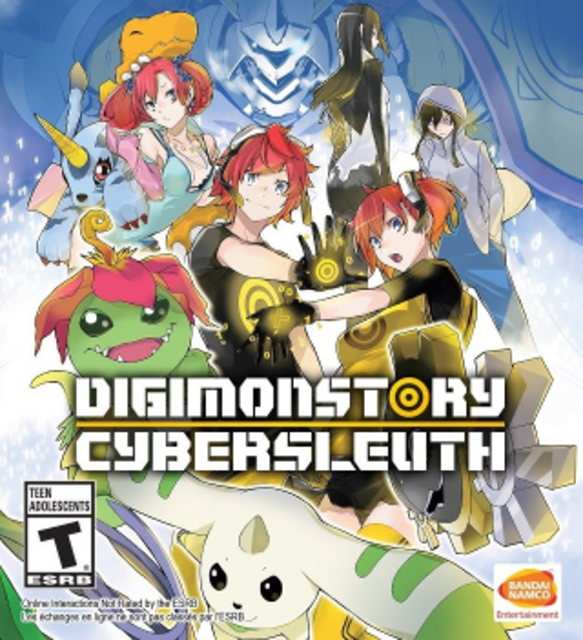How Digimon Got its Groove Back
It’s been a long time since the Digimon franchise has had a worthwhile release overseas. A franchise plagued by the curse of falling out of popularity with its target demographic in the West, the release rate of games for it had slowed to a trickle in the past decade. After the poorly received (and poorly developed) All-Star Rumble, it seemed like the series was as good as dead outside of Japan. Digimon Story: Cyber Sleuth though is exactly what Digimon needs to get players interested again.
The story starts out in futuristic Japan, one where 1-to-1 integration of the mind and the internet has been achieved through a network program called EDEN developed by the Kamishiro Group. Despite only being out for a little under a decade, everything and everyone is connected to EDEN, people, businesses, and even a seedy underbelly of digital crime are all part of what makes up the digital network of the future. One of the growing concerns of EDEN is the contraction of “EDEN Syndrome,” where users can suddenly fall comatose with little hope for revival. After obtaining the Digimon Capture program with a couple of friends, the game’s silent protagonist finds that they have fallen to EDEN Syndrome after a digital entity known as an “Eater” had ripped their physical consciousness from their body. Left with a physical consciousness in a digital body, the protagonist is taken in by Kyoko Kuremi, a detective that specializes in cyber-crime. By solving cases one at a time, and learning how to use the Digimon Capture program, the protagonist is set on finding a way back into their body as well as uncovering the shady history of the Kamishiro Group.
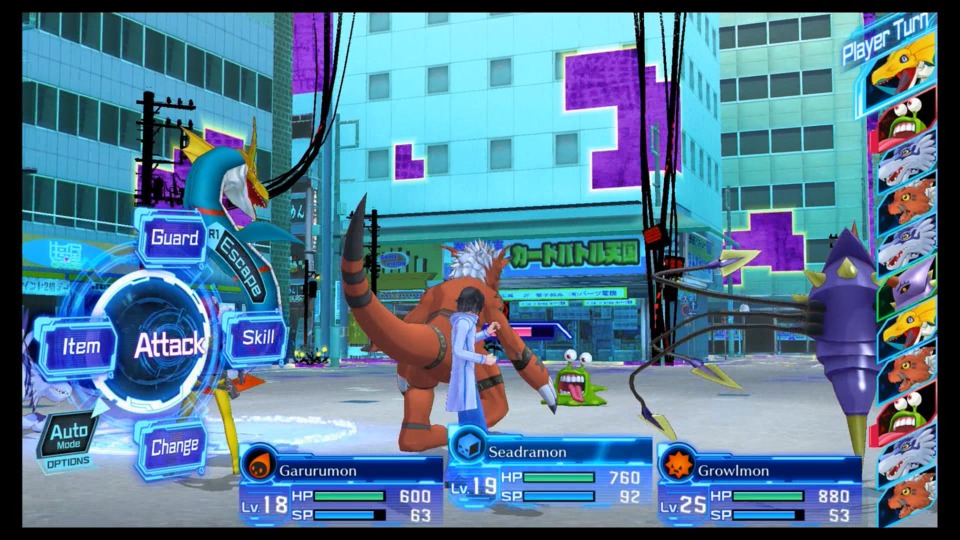
The rabbit hole for Cyber Slueth’s story goes much deeper than one would expect, starting out as a mix of episodic missions that build up the cyber-focused world within the game and building into something more. By the half-way point the tone takes a strong shift, Digimon slowly morph from being simple programs to thinking, feeling, creatures that some humans begin to accept while others reject them. Concepts such as how the internet can connect us and disconnect us from others begin to become staple focuses for missions, and overall it takes the game from feeling like is has a fantastical JRPG plot and grounds it in the same way a Shin Megami Tensei title questions morality and choice.
For how interesting the story gets the character tend to remain flat and unchanging, or surrounded by so much cliché that their progression doesn’t feel like actual progression. Nokia, one of the leading female side-characters, starts out as loud, annoying, and in general as a lazy good-for-nothing. She complains about others, talks a big game to others, and then ultimately falls back on having someone else clean up the mess. By the end of the game she was supposed to have matured into a person that doesn’t rely on others to fight her battles, but her loud and annoying personality persisted, covering up any concept of her changing as a character.
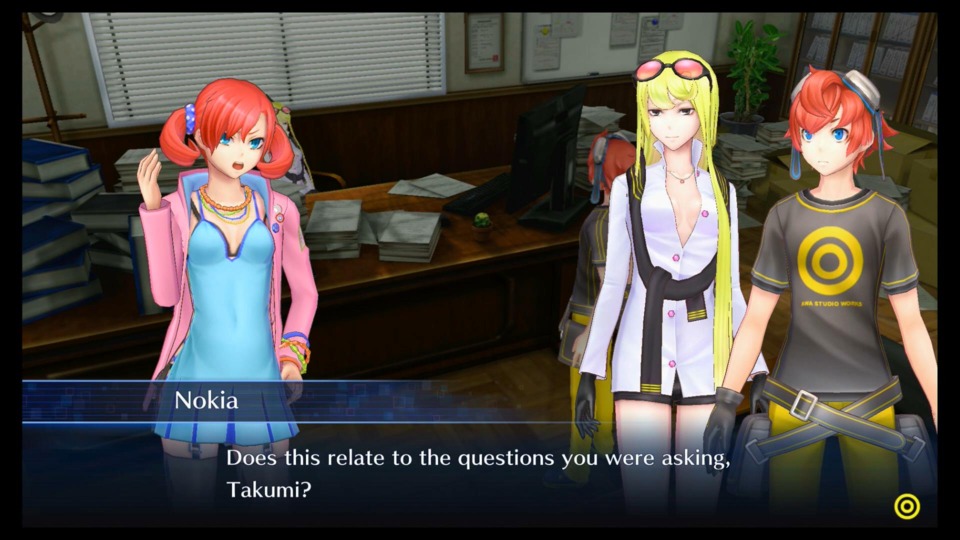
This questionable characterization doesn’t end with just the side-characters though. The main, silent, protagonist has their attitude shaped by all of their dialogue as happy-go-lucky, with the only sort of meaningful choice being gender, as nothing else they say or do has an effect on the course of the game. When characters begin to branch off on their own paths you don’t get to follow them. Despite being given options on how to react to a situation, every answer feels the exact same. It’s a trap a lot of games with meaningless dialogue options fall into, and unfortunately Cyber Sleuth is one of them.
But questionable characters are the least of Cyber Sleuth’s issues when faced with a bad localization. Many of the game’s lines are poorly translated, leaving awkward sentence structure and questionable grammar mistakes that stick out like overgrown weeds in a flower garden. The biggest culprit of poor word choice is the in-game messaging service, DigiLine, where characters constantly talk in an awkward third-person. One of the common back-and-froths in the game is the protagonist to their mom, who they constantly refer to as “my mother” even when they are messaging her directly.
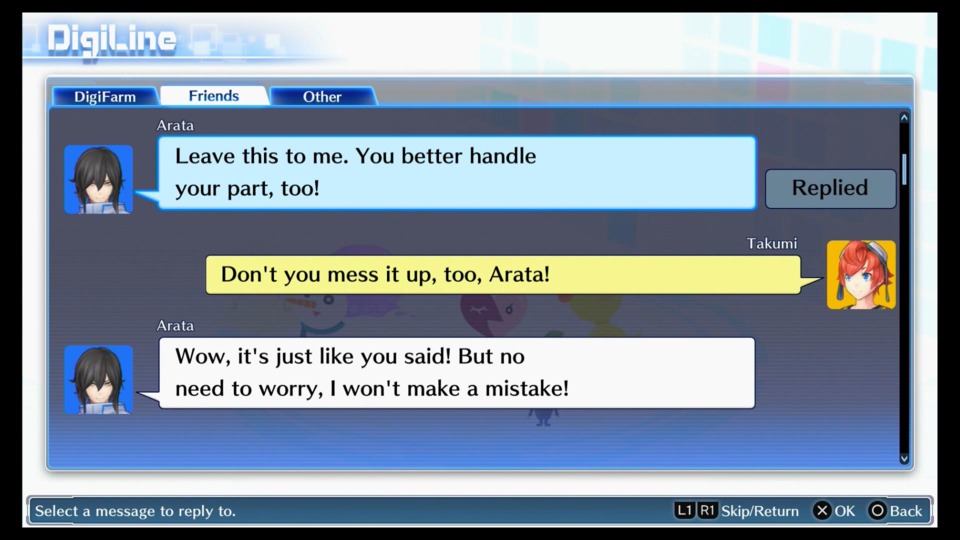
Thankfully, the lacking characterizations and awkward translations are about all of Cyber Sleuth’s issues. The game plays like a dream and continually stays engaging and interesting. Digimon are not caught in traditional sense as other monster raising games. You don’t have to befriend or weaken creatures before you can capture them, you simply have to face them in battle enough times. Running into a wild Digimon will add a bit of scan data to your capture application, and when the percentage hits 100 you can convert that data into said Digimon. It sounds like a lot of grinding, but it doesn’t feel like that. Battles in Cyber Sleuth move so quickly and offer so many rewards, that rarely do they feel like a waste of time. On top of gaining scan data, battles offer healthy amounts of experience, so you can grind levels on your party while also tracking down specific Digimon. This whole process is sped up by giving the player access to special skills that can force encounters, removing the need to aimlessly walk around and find one.
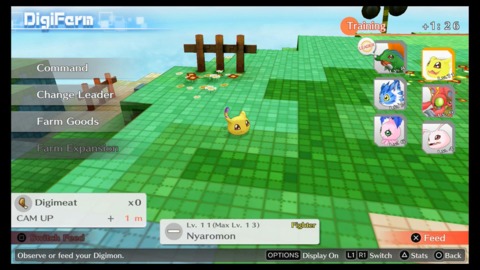
Random encounters are also very quick as long as you build your team properly. Since Digimon World there has been a weakness/resistance system in place, but Cyber Sleuth takes it to an extreme. If you have an offensive advantage over the monsters you’re encountering, it’s not rare to one-shot them. Most of the difficult battles end up being the bosses at the end of each chapter or fought through side missions. I’m actually quite a fan of this system, it gives a purpose to randomly encountering enemies without making these fights seems taxing. Where your team synergy and strategic decisions end up really mattering are in the most important fights. One wrong move against certain bosses can end up sending you to the “game over” screen, as it can be difficult to come back from a rocky start.
There’s more to the gameplay than battle though. Digivolution and De-Digivolution play an important part in team building. Digimon are not limited to one specific family tree and you can willingly change around what monster you have once you’ve learned the evolution patterns around them. De-Digivolving is one of the most effective ways to build the ABI stat, which determines how much bonus stats you can give to one Digimon as well as being a barrier for certain, stronger, final forms. Almost all of the Digimon you can collect and raise are from the various Anime series, so if you had a certain favorite, chances are it’s in here if it’s from Seasons 1, 2, 3, or 5.
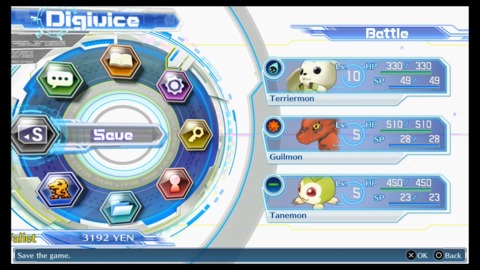
Most of the non-battle and Digimon related gameplay is a little boring though. Many of the games dungeons make use of switch puzzles that require your character to copy data from one location and bring it to another. Combine these puzzles with the boring labyrinth-like hallways many of the dungeons use, and things begin to slow down, but at least the graphics and music keep the game interesting during these points.
For a port of a Vita game, it doesn’t look that bad on the PS4, mostly because of how stylized everything is. While not cel-shading, the graphics evoke a similar look by making use of bright and vibrant colors for its characters. There’s also good attention to detail in all the backgrounds. Places in the real world are earthen, mixes of browns and other neutral colors. EDEN and the other various digital locations look very clean, defined by bright whites or blues. The characters are so varied in their designs that they pop no matter where they are, which is nice and fits with the vibrant color scheme of the game. There are some issues with pixilation on certain characters, as clothing attached directly to the characters rather than being placed on top of them, but it’s nothing that tears away from the pleasing visual aesthetic that game already has.
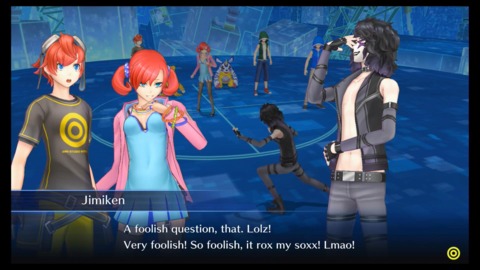
One of the most memorable things about Cyber Sleuth is its soundtrack. Composed by Masafumi Takeda, of No More Heroes and Danganronpa fame, it features an array of futuristic sounding tracks that all fit nicely with the given mood of any location or scene. Songs within EDEN have a very future-pop feel, Detective related themes are jazzy and romantic, and somber tones round out the more dramatic scenes.
Digimon Story: Cyber Sleuth is probably going to be one of the best JRPGs released this year, which will sadly be overshadowed by titles with larger notoriety like Persona 5 or Final Fantasy XV. Its solid gameplay and charming aesthetics carry the weight of its sometimes lackluster translation. It’s a more accessible game than previous Digimon titles thanks to the level of fine-tuning the combat and Digimon raising aspects have received, while also giving the player an enjoyable story. Fans of the JRPG genre will not be left disappointed with Digimon Story: Cyber Sleuth.
